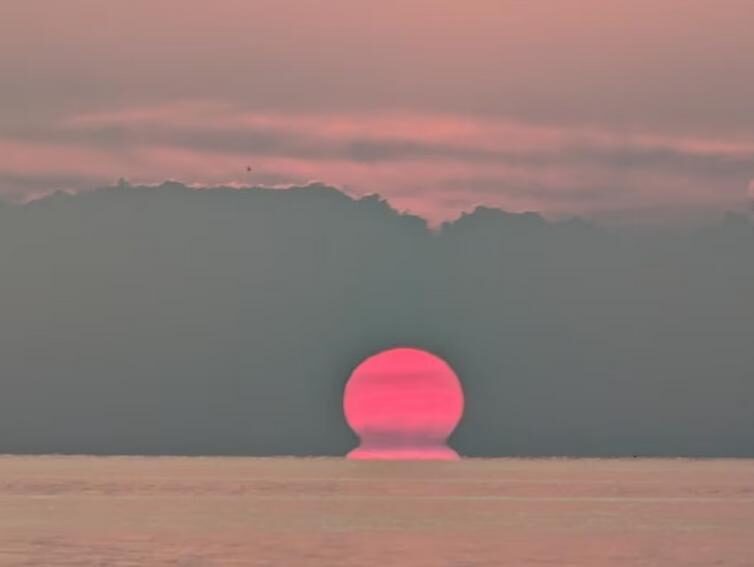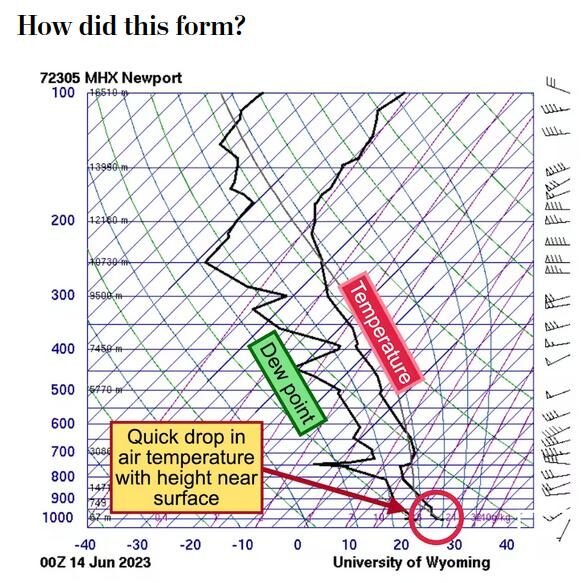
What was actually happening was an "inferior mirage," the product of sunlight being bent upward by a layer of warm air over the water. Contrary to popular belief, mirages are not relegated to hot arid deserts, and instead frequently appear over bodies of water where air temperature varies considerably with height. That can bend, or refract, light, distorting what we see. The result? A picture-perfect peachy omega, sunny side up.
Why is it called "omega sun"?
The name "omega" comes from its shape reminiscent of the Greek letter Ω.
What is an "inferior mirage"?
Mirages are not apparitions of things that are not actually there. Instead, they are the atmosphere's way of fooling us by warping the paths taken by rays of light. Inferior mirages form when air temperatures rapidly cool with height, which means they warm closer to the ground, bending rays of light upward toward an observer. That produces a second, upside-down image of an object below its actual position. In the case of Chai's sunset, the lower lip of the sun appears flipped and connected to the bottom of the sun.
Here is another example from the city of Uyuni in Bolivia. The hot dry bed of a salt lake meant that air temperatures within a meter of the surface were extremely toasty, but they cooled quickly with height. That caused images of distant objects to be bent back upward and flipped, creating a doubled upside-down version below objects. (That is why the vehicle and the people look to have reflections attached to their lower parts.)
The opposite is called a "superior mirage." It requires a strong inversion, or an increase in air temperature with height, to form. That produces an inverted, or upside-down, version of an object above its actual position. There is also a special type of complex superior mirage known as the "Fata Morgana," which can occasionally make ships appear to float. Sometimes a faraway ship can be obscured below the horizon, but its image can be projected over the horizon and refracted, or bent, to an observer many miles away.

In the colder air further above the surface of the water, sunlight was refracted more dramatically toward the ground. As those rays of light entered warmer air near the surface, they were refracted less, curving more gently and paralleling the surface before curving back upward toward the observer. That delivered a flipped image below the actual sun and made for Chai's very memorable sunset.



Comment: Various kinds of unusual, rare, and newly discovered, atmospheric phenomena appear to have been on the increase in recent years:
- Rare ELVE photographed during intense lightning storm over Italy
- Brocken spectre: Rare weather phenomenon captured on film by walker in Wales
- Fata Morgana? 'Ghost City' mirage filmed over lake in China
And check out SOTT radio's: